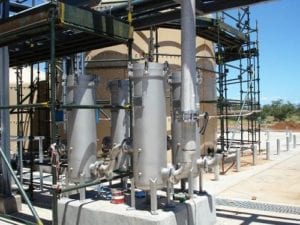The launch of a new oily water separator is good news for South African industrial operations as they can now achieve high standards of internationally-recognised discharge limits.
Through its commitment to the localisation of ProSpin oily water separation technology Procon Environmental Technologies now offers world-class technology at a significantly reduced costs combined with the added benefit of substantially reduced turnaround times. “Local manufacture and distribution offsets the effects of volatile exchange rates and eliminates the need for time-consuming shipping. The ProSpin solution offers considerable local benefits without compromising on efficiency and reliability,” states Procon founder and director of sales and business development Andy Miller. Miller explains that ProSpin is based on HiPer hydrocyclone designs that use strong centrifugal forces to separate oil and other contaminants from water. “The product range includes pneumatic engineered solutions for 3 m3/h to 9 m3/h of oily water flow, as well as electrical engineered solutions dealing with flows from 3 m3/h – 100 m³/h and upwards.”At the heart of this advanced technology is multi-port entry in the hydrocyclone that allows for greater separation when compared to older two-port entry hydrocyclones.
“All available pressure energy is converted in the rotating motion responsible for separation. As a result, common negative effects in conventional cyclones, such as boundary layer disturbances and flow-destabilisation, are eliminated,” continues Miller. “The shape of the swirl is such that the coalescence of light phase droplets is achieved in the first section of the swirl element. In the second section of the swirl, stabilising assures that the flow maintains stability without re-mixing the pre-separated flow.” The third factor to be considered is that the G-force is increased to more than 1000 G’s to avoid boundary layer separation and other losses in the specially designed tapered section. The total result is a cyclone that ensures the highest possible efficiency in combination with the lowest drop in pressure.







